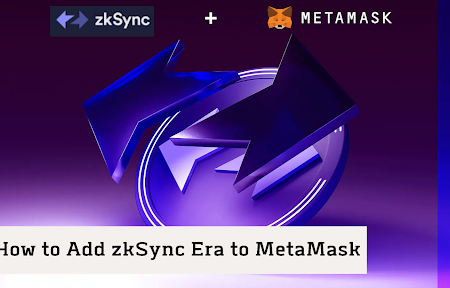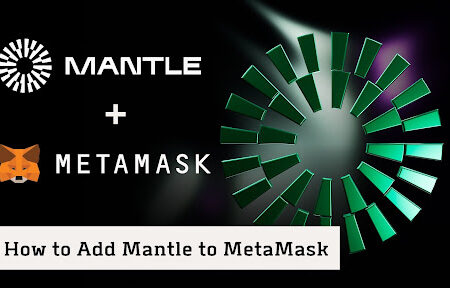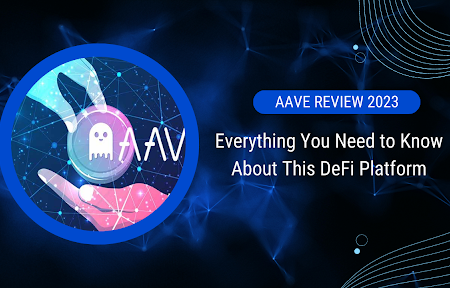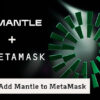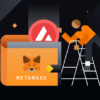Non-fungible tokens, or NFTs, are distinctive digital assets that may stand in for various things, including art, music, games, collectibles, and more. Blockchain technology, which powers them, guarantees their legitimacy, ownership, and scarcity. As more makers and collectors become aware of NFTs’ potential and worth, their popularity has surged in recent years.
How to create an NFT, however, is the question. What procedures and resources are needed? What are the advantages and difficulties of developing an NFT? This post will answer such queries, along with instructions on creating an NFT on Ethereum, one of the most well-liked and commonly utilized NFT platforms.
What is Ethereum and Why Use It for NFTs?
Smart contracts, self-executing agreements that operate on the network without intermediaries or censorship, are supported by Ethereum, a decentralized, open-source, and programmable blockchain network. In addition, Ether (ETH), a native token of Ethereum, is used to fund network transactions and other services.
One of the most significant platforms for developing NFTs is Ethereum since it has some benefits, including: – A sizable and active community of developers, users, and supporters continually inventing and enhancing the network.
- A strong and varied ecosystem of programs, equipment, and services that permits multiple NFT use cases and functions.
- High security and transparency levels guarantee the reliability and verifiability of NFTs.
- NFTs have a standard protocol called ERC-721 that outlines their fundamental characteristics and regulations and enables platform and wallet compatibility.
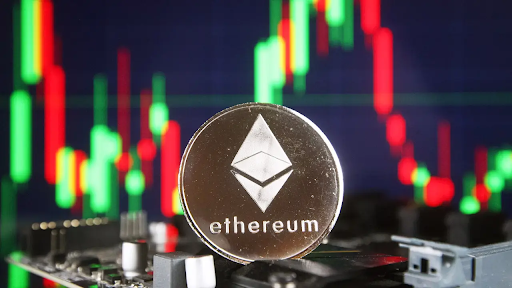
What is Ethereum and Why Use It for NFTs
What Do You Need to Create an NFT on Ethereum?
To create an NFT on Ethereum, you will need the following:
- A digital asset that you want to turn into an NFT. This can be anything from an image, a video, a song, a game item, or anything else you can upload to the internet. Ensure you have the rights and permissions to use the asset and that it does not infringe on any intellectual property or legal regulations.
- An Ethereum wallet that supports NFTs. This is where you will store your ETH and your NFTs. Many options are available, but some of the most popular ones are MetaMask, Trust Wallet, Coinbase Wallet, and Rainbow. You must create an account and set up your wallet with a password and a recovery phrase. You will also need to fund your wallet with some ETH to pay the fees for creating an NFT.
- An NFT marketplace or platform that allows you to create and sell your NFTs. Many options are available, but some of the most popular ones are OpenSea, Rarible, Mintable, SuperRare, and Foundation. You will need to connect your wallet to the marketplace or platform of your choice and follow their instructions on how to create an NFT.
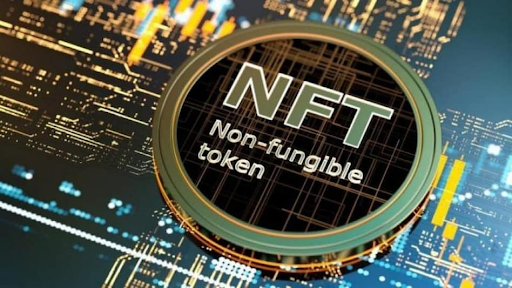
NFTs are unique cryptographic tokens that exist on a blockchain.
How to Create an NFT: A Step-by-Step Guide
Now that you have everything, let’s go through the steps of creating an NFT using OpenSea. OpenSea is one of the largest and most well-known NFT marketplaces, where you can buy, sell, trade, and learn about thousands of different NFTs from various categories. But how to create an NFT on OpenSea?
Here are the steps:
- Go to the OpenSea website and click “Create” at the top right corner.
- Click “My Collections” and then “Create New Collection”.
- Enter a name, a description, a logo image, a banner image, and a URL for your collection. A collection comprises related NFTs with a common theme or style. You can also customize the appearance and settings of your group as you wish.
- Click on “Create” to confirm your collection.
- Click on “Add New Item” to start creating your first NFT.
- Upload your digital asset file from your computer or a URL. Your file may also be dropped into the upload area via drag-and-drop.
- Enter a name, a description, an external link, and other properties or attributes for your NFT. You can also add additional files or media to enhance your NFT.
- Click on “Create” to confirm your NFT.
- Review your NFT and click “Sell” to list it for sale on the marketplace. It may be sold for a set price, an auction, or a bundle. You can also set a royalty percentage that you will receive every time your NFT is resold in the future.
- Confirm the transaction on your wallet and wait for it to be processed by the network. Congratulations, you have just created and listed your first NFT on Ethereum!

How to Create an NFT: A Step-by-Step Guide
What are the Benefits and Challenges of Creating an NFT on Ethereum?
Creating an NFT on Ethereum can offer you many benefits, such as:
- You are expressing your creativity and originality in a new and exciting way.
- They own and control your digital assets and their distribution.
- Reaching a global and diverse audience of buyers and collectors who appreciate your work.
- You were earning income and passive income from selling and reselling your NFTs.
- We are supporting and participating in the development and innovation of the NFT space.
However, creating an NFT on Ethereum can also pose some challenges, such as:
- They pay high fees for transactions and services on the network, especially when the network is congested or in high demand.
- You are facing technical issues or glitches that may affect the functionality or accessibility of your NFTs or the platforms you use.
- They were dealing with legal or ethical implications that may arise from using or misusing your NFTs or the assets they represent.
- Competing with other creators and sellers who may offer similar or better quality or value for their NFTs.
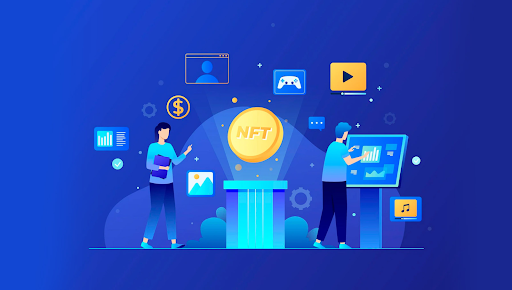
Creating an NFT on Ethereum can offer you many benefits.
How to choose the right platform and marketplace for your NFT?
You must select the forum and market you wish to utilize before constructing your own NFT. There are many choices, but they vary in terms of costs, popularity, compatibility, and functionality.
You generate and mint your NFT on the platform. A new token is “minted” on the blockchain and sent to your wallet address throughout this procedure. The platform also determines the blockchain network that your NFT will operate on. Ethereum, Binance Smart Chain, Polygon (formerly Matic), Flow, Tezos, and other networks are the most popular ones for NFTs.
You list and sell your NFT in the marketplace. Additionally, the marketplace offers facilities for bidding, auctioning, and trading your NFT and connecting you with possible purchasers. Some markets, like those for art, music, gaming, sports, etc., are tailored for particular NFTs.
You may produce and sell your NFT in one location thanks to the integration of several platforms and marketplaces. Others are distinct, requiring you to create and market your NFT using various services.
In this essay, we’ll utilize OpenSea to create an NFT on Ethereum. With a market share of over 90%, Ethereum is the most extensively used network for NFTs. The biggest and most well-known Ethereum NFT market is OpenSea. It supports a variety of NFT categories and formats, including:
- Art: Images, videos, animations, 3D models
- Music: Songs, albums, soundtracks
- Gaming: Items, characters, skins
- Domain Names: Decentralized web addresses
- Virtual Worlds: Land parcels, buildings
- Trading Cards: Sports cards
- Collectibles: Figures
- Utility: Access tokens
OpenSea also has some advantages over other platforms and marketplaces, such as:
- It is free to create and list your NFT on OpenSea (you only pay a gas fee when you sell it)
- It allows you to create your custom storefront and collection
- It offers a gas-free trading option using the Polygon network
- It has a large and active community of buyers and sellers
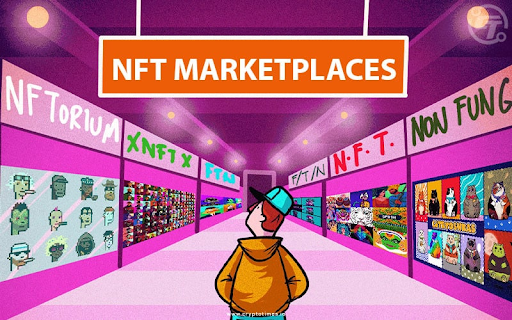
The Rise of NFT Marketplaces: How to Choose the Right One for You
Conclusion
This article has guided you on how to Create an NFT. The blockchain-based creation and ownership of NFTs is a novel and intriguing method. In addition to providing evidence of ownership, authenticity, exclusivity, originality, expression, and value, they offer several advantages to artists, creators, collectors, and admirers.
If you follow the advice in this post, building an NFT on Ethereum is relatively easy. All you have to do is have your digital asset ready, link your wallet, assemble a collection, mint your NFT, and advertise it for sale or trade on OpenSea or any other marketplace you choose.
Utilizing keywords, descriptions, links, photos, videos, and different types of material can also help you optimize your NFT for SEO and marketing. You should now be able to build an NFT on Ethereum, and we hope this post was helpful. Please leave your comments below if you have any queries or suggestions. Merry minting!
FAQs
Here are some frequently asked questions and answers about creating an NFT on Ethereum:
What is the difference between ERC-721 and ERC-1155 standards for NFTs?
Two of the most popular standards for developing and administering NFTs on Ethereum are ERC-721 and ERC-1155. The first and most frequently used standard is ERC-721.
A more recent and versatile standard, ERC-1155, permits using fungible and non-fungible tokens in the same contract. Additionally, ERC-1155 may simplify producing and transporting several NFTs simultaneously while lowering gas expenses. By comparing ERC-721 vs ERC-1155, you may discover more about these standards.
How much does it cost to create an NFT on Ethereum?
On Ethereum, some variables, including the platform, the network, the file size, and the gas price, affect how much it costs to create an NFT.
The venue is the tool you use, such as OpenSea, Rarible, Mintable, etc., to design and mint your NFT. The network is a blockchain platform like Ethereum, Binance Smart Chain, Polygon, etc., that your NFT is based on. When uploaded to a server or storage service, the size of your digital asset is known as the file size. The cost you pay to the miners to conduct your transaction on the network is known as the gas price.
The gas tax, which varies according to network demand and congestion, is the significant expense of building an NFT on Ethereum. To check the current gas pricing and determine your transaction fees, visit the Ethereum gas tracker. An NFT on Ethereum may often be created for a few dollars up to hundreds of dollars or more.
How to create an NFT marketplace on Ethereum?
A platform where users may purchase and sell NFTs is known as an NFT marketplace. OpenSea, Rarible, SuperRare, and other markets for NFT already exist on Ethereum.
However, you’ll need technical knowledge and resources to build your own NFT marketplace on Ethereum. The rules and logic of your marketplace, such as how users may post, bid, purchase, or sell NFTs, must be outlined in a smart contract.
A user interface that enables consumers to engage with your smart contract and show your NFTs will also be required. For instructions and examples on how to set up an NFT marketplace on Ethereum, see the tutorial on how to construct an NFT marketplace.
How do I store and manage my NFTs?
It would be best to have an NFT-compatible wallet to handle and store your NFTs. You can manage your currencies and tokens in a hardware or software wallet.
Some wallets, including MetaMask, Trust Wallet, Coinbase Wallet, and others, support NFTs. You may pick the ideal wallet for your requirements by using the selection guide for a wallet for NFTs.
You may use your freshly created wallet to transfer, receive, or see NFTs. It also links to other platforms and markets where NFTs are made, purchased, sold, or exchanged.
What are the environmental impacts of NFTs?
NFTs, particularly those operating on the Ethereum network, are often condemned for their adverse environmental effects. This is because Ethereum employs the proof-of-work (PoW) consensus process, which requires significant computer power and energy to verify transactions and protect the network.
Ethereum utilizes over 70 terawatt-hours of power annually, similar to the yearly Ethereum energy consumption of nations like Bangladesh or Chile, according to the Ethereum energy consumption index.
Nevertheless, there are also various strategies to lessen the effects of NFTs on the environment, such as:
- Utilizing alternative networks or platforms, such as proof-of-stake (PoS), proof-of-authority (PoA), or proof-of-space, that use more energy-efficient consensus methods (PoS).
- By using layer-2 solutions or side chains that execute transactions off-chain and lessen the burden on the primary network.
- Use carbon offsets or renewable energy sources to make up for the emissions produced by NFT transactions.
- It supports projects that seek to increase the long-term viability and scalability of networks like Ethereum.
